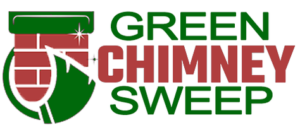Installing a chimney liner is a significant investment in the safety, efficiency, and longevity of your chimney system. Whether you’re upgrading an existing liner or installing a new one, understanding the process and benefits of chimney liner installation is crucial for homeowners. This comprehensive guide will walk you through everything you need to know about chimney liner installation, ensuring you can make informed decisions to protect your home and enhance your fireplace’s performance.
Understanding Chimney Liners
Before delving into the installation process, it’s essential to understand the role of chimney liners and why they are necessary. A chimney liner is a protective barrier installed inside a chimney flue. Its primary functions include:
- Safety Enhancement: Prevents heat transfer to combustible materials and contains combustion byproducts such as carbon monoxide.
- Improved Efficiency: Facilitates proper draft and airflow, optimizing the performance of your fireplace or heating appliance.
- Structural Protection: Guards against chimney deterioration caused by corrosive gases and moisture.
Types of Chimney Liners:
- Clay Tile Liners: Traditional and durable, commonly found in older homes.
- Metal Liners: Stainless steel or aluminum, versatile for various fuel types.
- Cast-in-Place Liners: Cementitious liners poured into the chimney for a seamless fit.
Benefits of Chimney Liner Installation
Installing or replacing a chimney liner offers several key benefits that contribute to the overall safety and efficiency of your home.
- Enhanced Safety: Reduces the risk of chimney fires by preventing heat transfer and containing flammable creosote buildup.
- Improved Efficiency: Optimizes airflow, allowing your fireplace or stove to burn fuel more efficiently and produce more heat.
- Extended Chimney Lifespan: Protects the chimney structure from corrosion and deterioration, prolonging its durability.
- Versatility: Allows for easier transition between different fuel types or appliance upgrades.
Chimney Liner Installation Process
The chimney liner installation process involves several steps to ensure a safe and effective installation.
- Assessment and Measurement: A professional chimney sweep will assess the chimney, taking measurements to determine the appropriate liner size and type.
- Preparation: The chimney flue is cleaned thoroughly to remove any debris, creosote buildup, or existing liner materials.
- Liner Selection: Based on the assessment, the appropriate liner material (metal, clay, or cast-in-place) is selected to meet the chimney’s specific needs and local building codes.
- Installation: The liner is installed carefully, ensuring a snug fit that allows for proper venting and draft. Metal liners are typically inserted into the chimney, while cast-in-place liners are poured and molded to fit.
- Insulation (if applicable): Insulation may be added around the liner to improve draft and prevent condensation.
- Sealing and Testing: The liner joints are sealed to prevent leaks, and the entire system is tested to ensure proper airflow and venting.
Do You Need a Chimney Liner?
Determining whether you need a chimney liner depends on several factors:
- Age and Condition of Chimney: Older chimneys may not have a liner or may have a deteriorating one that needs replacement.
- Change in Fuel Type: If you are switching from one fuel type to another (e.g., wood to gas), a new liner may be required to accommodate the different venting requirements.
- Safety and Efficiency Concerns: Signs such as poor draft, visible damage to the chimney, or safety hazards like carbon monoxide leaks indicate the need for a liner inspection or replacement.
Maintaining Your Chimney Liner
Once installed, proper maintenance is essential to maximize the lifespan and effectiveness of your chimney liner:
- Annual Inspections: Schedule regular chimney inspections to check for any signs of damage or deterioration.
- Regular Cleanings: Keep the chimney clean to prevent creosote buildup, which can lead to chimney fires.
- Monitor Performance: Pay attention to how your fireplace or stove operates. Changes in performance can indicate issues with the liner that need to be addressed promptly.
Conclusion
Installing a chimney liner is a critical step in ensuring the safety, efficiency, and longevity of your chimney system. By understanding the benefits and the installation process, homeowners can make informed decisions to protect their homes and enhance their fireplace’s performance.
For professional chimney liner installation and maintenance services, consider contacting a trusted provider like Green Chimney Sweep. Our experienced technicians are dedicated to ensuring your chimney system is safe, efficient, and in optimal condition. Schedule your consultation today to start enjoying the benefits of a properly installed chimney liner.
